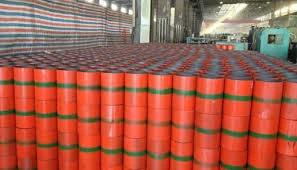- Afrikaans
- Albanian
- Amharic
- Arabic
- Armenian
- Azerbaijani
- Basque
- Belarusian
- Bengali
- Bosnian
- Bulgarian
- Catalan
- Cebuano
- Corsican
- Croatian
- Czech
- Danish
- Dutch
- English
- Esperanto
- Estonian
- Finnish
- French
- Frisian
- Galician
- Georgian
- German
- Greek
- Gujarati
- Haitian Creole
- hausa
- hawaiian
- Hebrew
- Hindi
- Miao
- Hungarian
- Icelandic
- igbo
- Indonesian
- irish
- Italian
- Japanese
- Javanese
- Kannada
- kazakh
- Khmer
- Rwandese
- Korean
- Kurdish
- Kyrgyz
- Lao
- Latin
- Latvian
- Lithuanian
- Luxembourgish
- Macedonian
- Malgashi
- Malay
- Malayalam
- Maltese
- Maori
- Marathi
- Mongolian
- Myanmar
- Nepali
- Norwegian
- Norwegian
- Occitan
- Pashto
- Persian
- Polish
- Portuguese
- Punjabi
- Romanian
- Russian
- Samoan
- Scottish Gaelic
- Serbian
- Sesotho
- Shona
- Sindhi
- Sinhala
- Slovak
- Slovenian
- Somali
- Spanish
- Sundanese
- Swahili
- Swedish
- Tagalog
- Tajik
- Tamil
- Tatar
- Telugu
- Thai
- Turkish
- Turkmen
- Ukrainian
- Urdu
- Uighur
- Uzbek
- Vietnamese
- Welsh
- Bantu
- Yiddish
- Yoruba
- Zulu
casing and tubing connections
Casing and Tubing Connections An Overview
Casing and tubing connections are critical components in the oil and gas industry, ensuring the safe and efficient extraction of hydrocarbons. These connections are essential for maintaining the integrity of the wellbore, preventing fluid migration, and enabling effective production operations. Understanding their types, functions, and best practices is crucial for operators and engineers in the field.
Casing refers to the series of steel pipes that are inserted into the wellbore to provide structural support. These pipes protect the well from external pressures, prevent the collapse of the borehole, and isolate different geological formations. The connections between casing sections are usually made using threaded couplings or welding techniques. The most common types of casing connections include threaded and coupled, welded, and premium connections. Each type has its advantages and is chosen based on the specific requirements of the well.
Tubing, on the other hand, is the pipe that runs through the casing to deliver oil and gas from the reservoir to the surface. Tubing connections play a pivotal role in production. They must withstand significant pressures and corrosive environments throughout their operational life. Similar to casing, tubing connections can also be threaded, coupled, or utilize specialized designs. A properly made tubing connection ensures minimal pressure loss and maximizes production efficiency.
casing and tubing connections

The selection of casing and tubing connections depends on various factors, including well depth, expected pressures, temperature conditions, and the type of fluids being produced
. Engineers must evaluate these factors to choose the most suitable connection type to ensure safety and performance.Installation practices are equally important when it comes to casing and tubing connections. Proper alignment, torque specifications, and handling techniques can significantly impact the reliability of the connections. Moreover, regular inspection and maintenance of these connections are vital to detect potential issues such as wear, corrosion, or mechanical failures, which can lead to costly production shutdowns or environmental hazards.
In conclusion, casing and tubing connections are fundamental to the well construction and production processes in the oil and gas industry. Their design, selection, and installation are crucial for ensuring operational safety and efficiency. As technology advances, innovations in connection designs continue to improve performance and reliability, paving the way for more efficient energy production while addressing environmental concerns. Understanding these connections and their management is essential for professionals in the field to enhance production outcomes and maintain industry standards.
-
Tubing Pup Joints: Essential Components for Oil and Gas OperationsNewsJul.10,2025
-
Pup Joints: Essential Components for Reliable Drilling OperationsNewsJul.10,2025
-
Pipe Couplings: Connecting Your World EfficientlyNewsJul.10,2025
-
Mastering Oilfield Operations with Quality Tubing and CasingNewsJul.10,2025
-
High-Quality Casing Couplings for Every NeedNewsJul.10,2025
-
Boost Your Drilling Efficiency with Premium Crossover Tools & Seating NipplesNewsJul.10,2025







